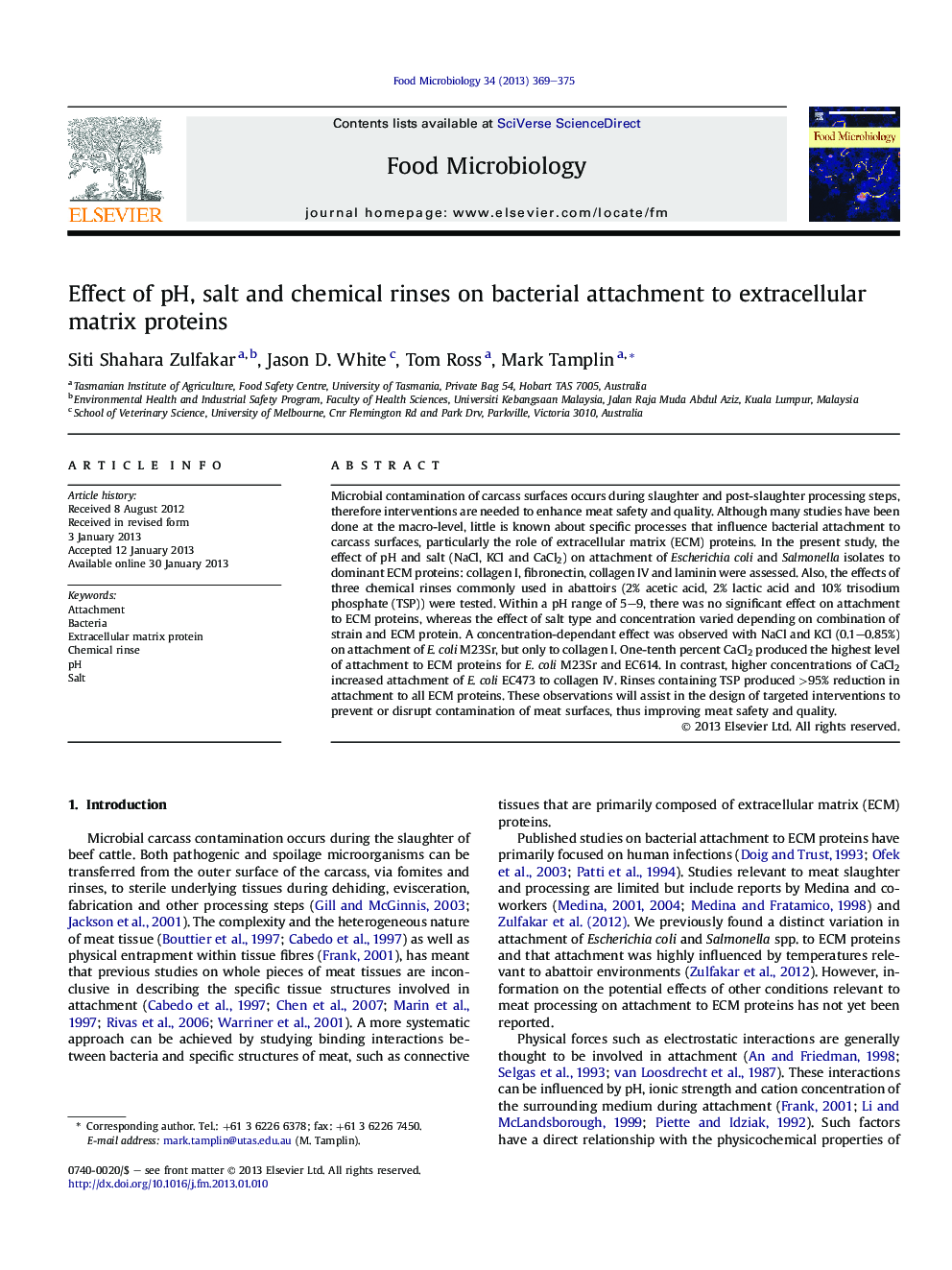| Article ID | Journal | Published Year | Pages | File Type |
|---|---|---|---|---|
| 6288950 | Food Microbiology | 2013 | 7 Pages |
Microbial contamination of carcass surfaces occurs during slaughter and post-slaughter processing steps, therefore interventions are needed to enhance meat safety and quality. Although many studies have been done at the macro-level, little is known about specific processes that influence bacterial attachment to carcass surfaces, particularly the role of extracellular matrix (ECM) proteins. In the present study, the effect of pH and salt (NaCl, KCl and CaCl2) on attachment of Escherichia coli and Salmonella isolates to dominant ECM proteins: collagen I, fibronectin, collagen IV and laminin were assessed. Also, the effects of three chemical rinses commonly used in abattoirs (2% acetic acid, 2% lactic acid and 10% trisodium phosphate (TSP)) were tested. Within a pH range of 5-9, there was no significant effect on attachment to ECM proteins, whereas the effect of salt type and concentration varied depending on combination of strain and ECM protein. A concentration-dependant effect was observed with NaCl and KCl (0.1-0.85%) on attachment of E. coli M23Sr, but only to collagen I. One-tenth percent CaCl2 produced the highest level of attachment to ECM proteins for E. coli M23Sr and EC614. In contrast, higher concentrations of CaCl2 increased attachment of E. coli EC473 to collagen IV. Rinses containing TSP produced >95% reduction in attachment to all ECM proteins. These observations will assist in the design of targeted interventions to prevent or disrupt contamination of meat surfaces, thus improving meat safety and quality.
⺠Effects of pH and salt on attachment of bacteria to ECM proteins were studied. ⺠pH had no significant effect over a range of pH 5-9. ⺠Salt had a significant effect that varied by strain and ECM protein. ⺠Rinses containing TSP produced >95% reduction in attachment to all ECM proteins. âºÂ These findings may lead to novel interventions to reduce carcass contamination.
